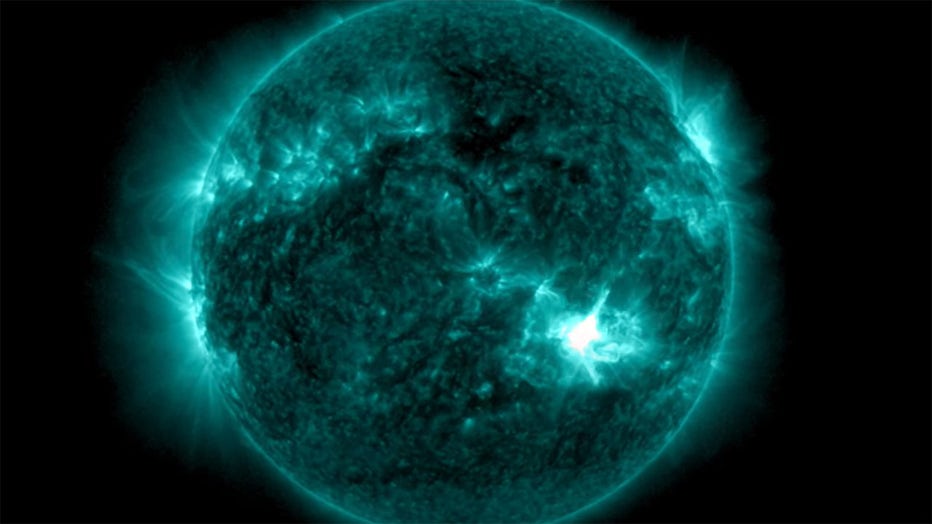Solar flare could disrupt communications, produce northern lights
How to survive a coronal mass ejection
Most of Earth's modern power grids are more than capable of handling a large solar flare or coronal mass ejection but, what if a particularly strong space weather event took place?
Northern lights could be visible in much of the U.S. this weekend, but the strong solar storm headed toward Earth could also potentially disrupt communications.
The National Oceanic and Atmospheric Administration issued the rare watch on Thursday night, warning that the solar flare effects would be worst Friday night but could last all weekend.
"G4 conditions were observed by [Space Weather Prediction Center] around 12:37 p.m. EDT today and significant to severe geomagnetic storming is likely to continue," the agency posted Friday.
G4 solar storm watch
The National Oceanic and Atmospheric Administration upgraded a geomagnetic solar storm watch from a Level 3 ("moderate") to a Level 4 ("severe") watch after several solar flares combined.
According to NOAA, the explosive acceleration of charged and superheated plasma, known as a coronal mass ejection or CME, speeds through space and expands.

NOAA’s GOES-16 satellite captured the eruption from the sun that occurred around 2 p.m. EDT on May 9, 2024. Credit: NOAA
NOAA is calling this an "unusual event," pointing out that the flares seem to be associated with a sunspot that’s 16 times the diameter of Earth.
"Watches at this level are very rare," NOAA stated in the alert.
This is the first "severe" geomagnetic storm watch issued since January 2005.
Northern lights forecast
You may be able to see auroras, better known as the northern lights, as far south as Alabama, the agency says, but they are more likely the farther north you are. You should travel away from cities and lights for best viewing Friday night or early Saturday.
Experts stressed it would not look like the dramatic curtains of color normally associated with the northern lights, but more like splashes of greenish hues.

Aurora cloud cover forecast for Saturday morning, May 11. (FOX Weather)
Friday night into Saturday, the FOX Weather Forecast Center says skies look clear for most of the northern U.S. with less than 10% cloud cover expected from the Midwest to the Northwest. However, clouds will be around in the Northeast.
RELATED: 'Severe' solar storm could trigger Northern Lights as far south as Alabama on Friday night
Effects on power grid, communications
An extreme geomagnetic storm in 2003 took out power in Sweden and damaged power transformers in South Africa.
This weekend, NOAA says a swath of the planet could see a blackout of high frequency radio communications for hours. The geomagnetic storm could also cause widespread voltage irregularities in power systems which trigger false alarms on security devices, cause drag on low earth orbit satellites preventing them from orienting and cause range errors and a loss-of-lock for GPS systems.

File: The Aurora Borealis appears in the sky on January 8, 2017 near Ester Dome mountain about 10 miles west of Fairbanks, Alaska. The Aurora Borealis is a result of the interaction between solar wind and the earth's magnetosphere. (Photo by Lance Ki
What was the Carrington Event?
Earth has experienced space storms throughout its history. Scientific data from ice samples taken from the arctic show evidence of massive geomagnetic storms as early as 774 A.D.
In 1859, the Carrington Event, named after British astronomer Richard Carrington, caused mass terror when it obliterated the entire global telegraph system. Auroras were visible as far south as Colombia in what is considered the largest recorded account of a solar storm to hit Earth.
Telegraph operators reported receiving electric shocks when touching their instruments as telegraph paper reportedly caught fire from the charges.
RELATED: How to survive a coronal mass ejection
This story was reported from Tampa, Fla. FOX’s Austin Williams, FOX Weather, and The Associated Press contributed.

